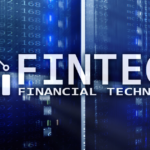The world of financial technology—better known as FinTech—is changing how people and businesses handle money. Whether you’re sending money online, using a budgeting app, or investing with a robo-advisor, you’re already part of the FinTech revolution. But did you know that FinTech is not just one thing?
There are actually many types of FinTech, each with a unique role in transforming our financial lives.
7 Major Types of Fintech
1. Digital Payments
What it is:
Digital payments allow people to send and receive money electronically—without cash or checks.
Examples:
Mobile wallets like Google Pay, Apple Pay, and apps like PayPal or bKash (popular in Bangladesh) make it easy to transfer money instantly.
Why it matters:
Digital payments reduce the need for physical contact, make shopping easier, and help businesses go global. It also boosts financial inclusion in developing countries.
2. Digital Lending
What it is:
Digital lending platforms allow users to apply for loans online, without visiting a bank.
Examples:
Apps like LendingClub, Upstart, or local services like AamarPay help people get personal or business loans faster.
Why it matters:
These platforms use data and AI to assess credit risk quickly. This means faster approvals, lower costs, and access to credit for people who may not qualify at traditional banks.
3. Personal Finance and WealthTech
What it is:
These tools help people manage their money, plan budgets, or invest smarter.
Examples:
Apps like Mint, YNAB (You Need a Budget), or robo-advisors like Betterment or Wealthfront.
Why it matters:
It gives regular people better control over their money and helps them plan for the future without needing a financial advisor.
4. InsurTech (Insurance Technology)
What it is:
InsurTech uses technology to improve insurance services, making them easier and more affordable.
Examples:
Platforms like Lemonade, Root Insurance, or Policybazaar offer quick insurance quotes and allow you to file claims through your phone.
Why it matters:
InsurTech is cutting down paperwork, improving customer service, and using AI to process claims faster.
5. RegTech (Regulatory Technology)
What it is:
RegTech helps companies follow financial laws and regulations using automation.
Examples:
Tools that verify customer identity (KYC), monitor transactions for fraud, and ensure legal compliance.
Why it matters:
It protects both users and businesses from fraud and financial crime while reducing compliance costs.
6. Blockchain and Cryptocurrencies
What it is:
This type includes digital currencies like Bitcoin or Ethereum and blockchain platforms that store financial records securely.
Examples:
Crypto exchanges like Coinbase, decentralized finance (DeFi) apps, and even blockchain-based voting or supply chain tracking tools.
Why it matters:
Blockchain offers transparent, fast, and secure financial transactions without needing banks or middlemen.
7. Neobanks and Challenger Banks
What it is:
These are fully digital banks with no physical branches.
Examples:
Chime, N26, Revolut, and Monzo offer banking services like accounts, cards, and transfers via mobile apps.
Why it matters:
Neobanks are flexible, user-friendly, and perfect for people who prefer digital-first banking.
Why Understanding FinTech Types Matters
Knowing the different types of FinTech helps individuals and businesses choose the right tools for their needs. Whether you’re looking for a loan, saving money, or investing, there’s a FinTech solution designed just for that.
It also helps entrepreneurs, startups, and investors identify opportunities in the growing financial technology space.
Final Thoughts
FinTech is much more than just digital money apps. It’s a broad field made up of seven powerful categories:
-
Digital Payments
-
Digital Lending
-
Personal Finance & WealthTech
-
InsurTech
-
RegTech
-
Blockchain & Cryptocurrency
-
Neobanks
Each one is playing a key role in reshaping how the world handles money. From improving access to financial services in rural areas to helping investors make smarter choices, FinTech is making finance more inclusive and efficient.
FAQs
1. What is FinTech in simple words?
FinTech means using technology to improve financial services like payments, lending, banking, and investing.
2. What are examples of FinTech apps?
Examples include Google Pay (payments), Betterment (investment), and Lemonade (insurance).
3. Is cryptocurrency a part of FinTech?
Yes, cryptocurrency and blockchain are major types of FinTech focused on digital currency and secure transactions.
4. Are FinTech and digital banking the same?
Not exactly. Digital banking is a part of FinTech. FinTech is a broader field that includes many services, not just banking.

